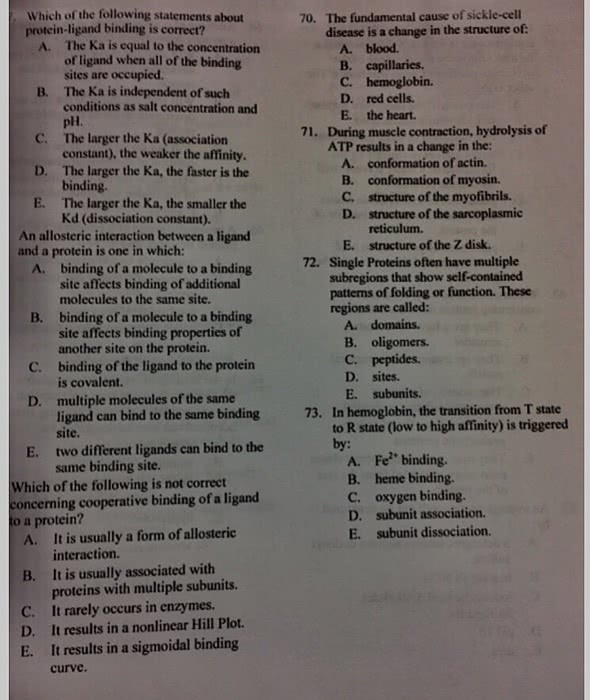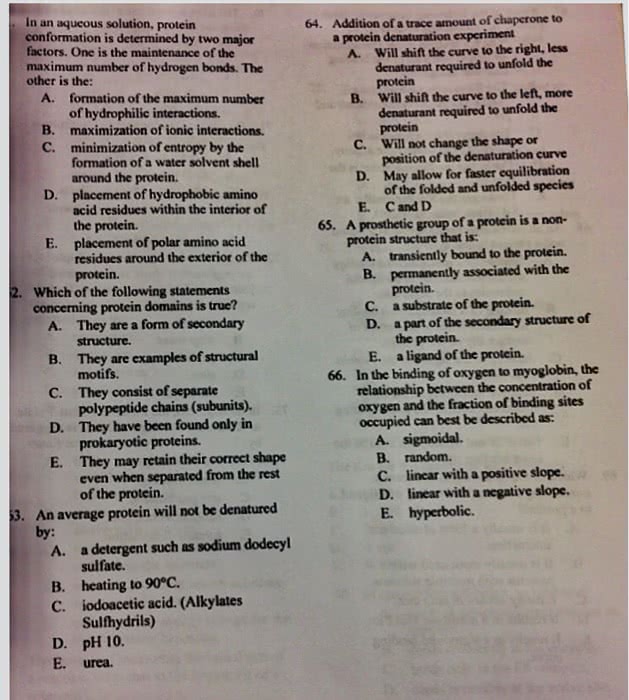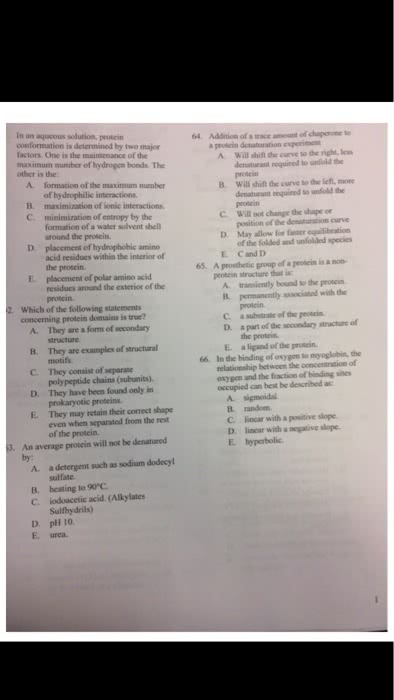CH250 Lecture Notes - Lecture 10: Steric Effects, Histidine, Genetic Recombination
Document Summary
Multiple choice questions: reversible binding of a protein to a ligand: oxygen-binding proteins. In hemoglobin, the transition from t state to r state (low to high affinity) is triggered by: fe2+ binding, heme binding, oxygen binding, subunit association, subunit dissociation, reversible binding of a protein to a ligand: oxygen-binding proteins. It is normally found associated with the hemoglobin extracted from red blood cells. 53: reversible binding of a protein to a ligand: oxygen-binding proteins. It results in a sigmoidal binding curve: reversible binding of a protein to a ligand: oxygen-binding proteins. The fundamental cause of sickle-cell disease is a change in the structure of: blood, capillaries, hemoglobin, red cells. the heart, complementary interactions between proteins and ligands: the immune system and. An individual molecular structure within an antigen to which an individual antibody binds is as a(n): antigen, epitope, fab region, fc region, mhc site. Chapter 5 protein function: complementary interactions between proteins and ligands: the immune system and.





